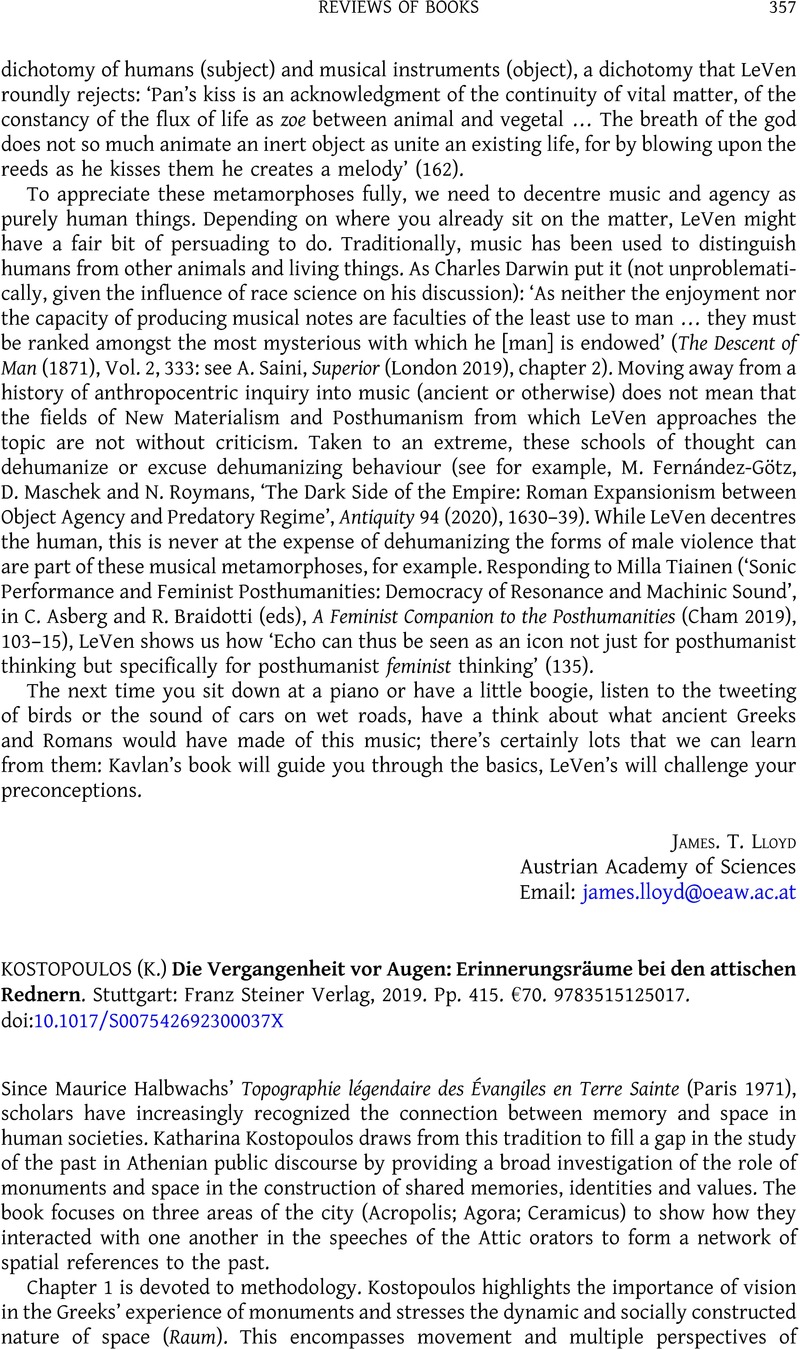No CrossRef data available.
Article contents
(K.) Kostopoulos Die Vergangenheit vor Augen: Erinnerungsräume bei den attischen Rednern. Stuttgart: Franz Steiner Verlag, 2019. Pp. 415. €70. 9783515125017.
Review products
(K.) Kostopoulos Die Vergangenheit vor Augen: Erinnerungsräume bei den attischen Rednern. Stuttgart: Franz Steiner Verlag, 2019. Pp. 415. €70. 9783515125017.
Part of:
History
Published online by Cambridge University Press: 27 April 2023
Abstract
An abstract is not available for this content so a preview has been provided. Please use the Get access link above for information on how to access this content.

- Type
- Reviews of Books
- Information
- Copyright
- © The Author(s), 2023. Published by Cambridge University Press on behalf of the Society for the Promotion of Hellenic Studies


